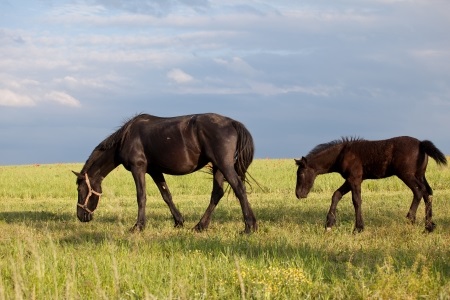Do you limit grazing time with your horses? Horses surely love to graze, but as you probably know, keeping to a strict diet and limiting grazing can help keep your horse healthy and feeling great. But why exactly is grazing so dangerous?
According to HorseChannel.com, unlimited grazing can trigger a condition known as laminitis in many different kinds of horses. Laminitis is inflammation in the foot in the soft tissue that attaches the foot’s bone to the hoof.
Horses that suffer from laminitis experience severe pain, and in worst case scenarios, laminitis can result in total separation of the bone and the hoof. When a horse is diagnosed with a severe case of laminitis, your vet might recommend anti-inflammatory medication, and relocating your horse to an area with deep shavings to take some pressure off the foot.
If laminitis is caught early, it’s possible for the horse to regain almost all function in his foot. The key to avoiding a potentially painful and lifelong disease like laminitis is prevention.
The reason over-grazing is often an inciting factor to laminitis is because starches and sugars often store up in grasses during sunny, mild weather. When a horse eats grass that has an excess of starches and sugars, laminitis can be triggered.
To prevent this from happening to your horses, you should keep your pastures mowed. Be sure to watch your horse carefully and take note of any potential symptoms such as swelling in the neck and feet. If these symptoms do occur, take your horse to a dry stall until the weather changes and switch them to a low-sugar, hay diet. You should also make sure to keep the horse moving, exercising them at least three times a week to keep them fit and healthy.
For top quality barns and cabins, visit Deer Creek Structures.
